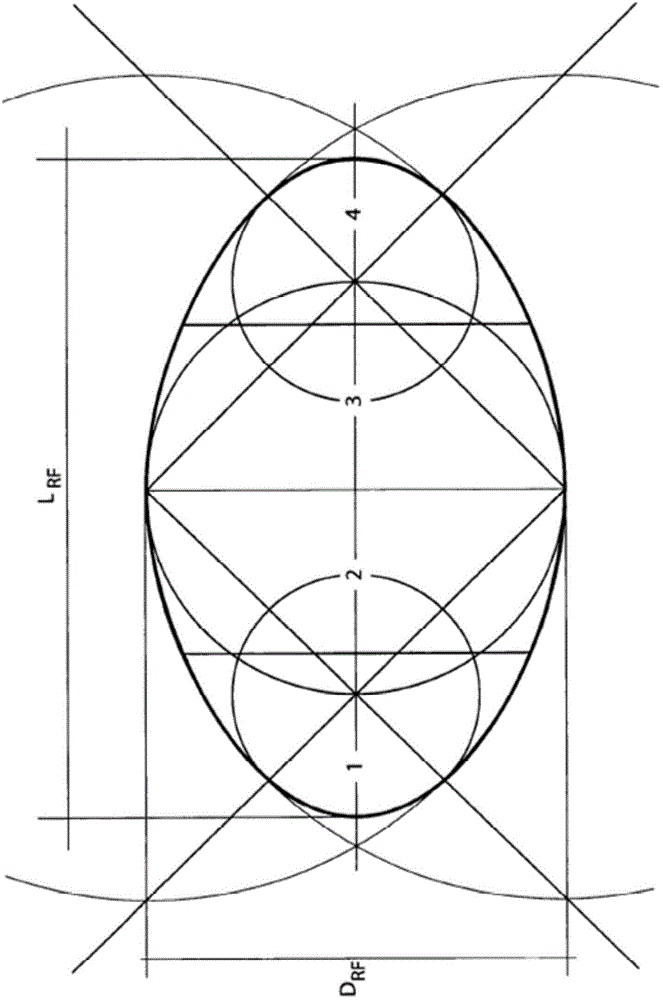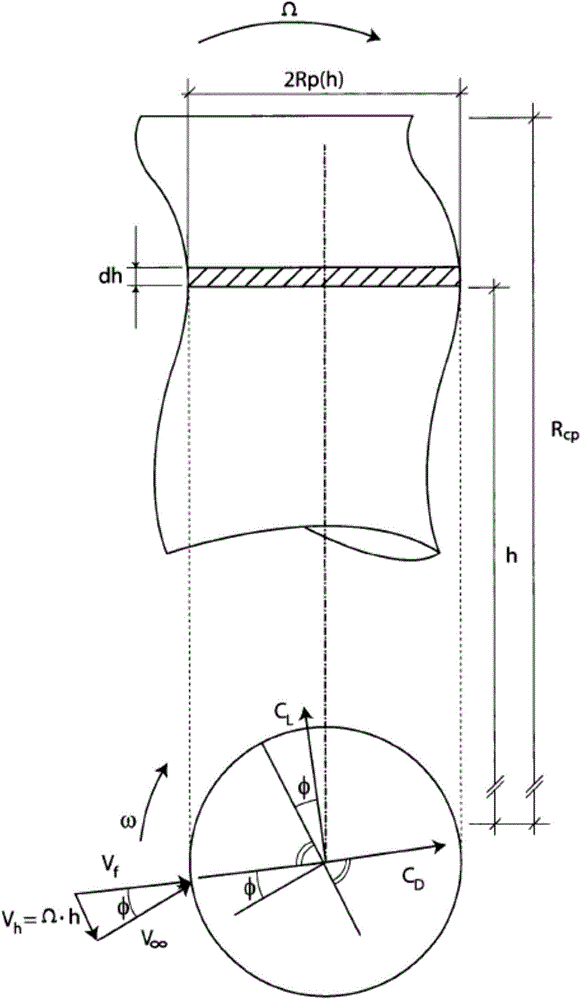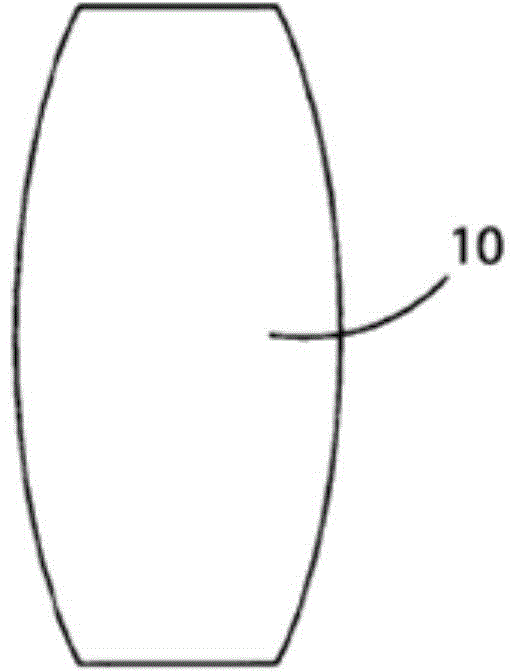Rotating blade bodies for turbines using magnus effect with rotation axis of turbine at right angle to direction of fluid
A technology of rotating axis and rotating body, which is applied in the direction of wind power generators at right angles to the wind direction, machines/engines, and wind power motors in the same direction as the wind direction, which can solve optimization problems and achieve the effect of energy dissipation and loss reduction
- Summary
- Abstract
- Description
- Claims
- Application Information
AI Technical Summary
Problems solved by technology
Method used
Image
Examples
Embodiment Construction
[0053] It is known that the kinetic energy per unit time of ordinary flow conduits can be converted into mechanical work, and this mechanical work can be converted into electrical energy.
[0054] Recent theoretical and experimental (Badr, H.M., Coutanceau, M., Dennis, S.C.R. and Menard, C., "Crossing a Reynolds number of 10 3 and 10 4 (Unsteady flow past a rotating circular cylinder at Reynolds numbers 103and 104)", J.Fluid Mech.(1990), vol.220,459-484.; M.H.Chou, "From submerged in a uniform flow field Numerical study of vortex shedding from a rotating cylinder immersed in a uniform flow field"Int.J.Numer.Meth.Fluids(2000),vol.32,545-567; Y.T.Chew ,M.Cheng,S.C.Luo: "A numerical study of flow past a rotating circular cylinder using a hybrid vortex scheme"J.Fluid Mech.(1995) , vol.299, pp.35-71; W.M.Swonson "The Magnus effect: A summary of investigation to date (The Magnus effect: A summary of investigation to date)", Trans.ASME, D, (1961), vol. 83.No.3, P.461-470; N.M.Bych...
PUM
 Login to View More
Login to View More Abstract
Description
Claims
Application Information
 Login to View More
Login to View More - R&D
- Intellectual Property
- Life Sciences
- Materials
- Tech Scout
- Unparalleled Data Quality
- Higher Quality Content
- 60% Fewer Hallucinations
Browse by: Latest US Patents, China's latest patents, Technical Efficacy Thesaurus, Application Domain, Technology Topic, Popular Technical Reports.
© 2025 PatSnap. All rights reserved.Legal|Privacy policy|Modern Slavery Act Transparency Statement|Sitemap|About US| Contact US: help@patsnap.com



